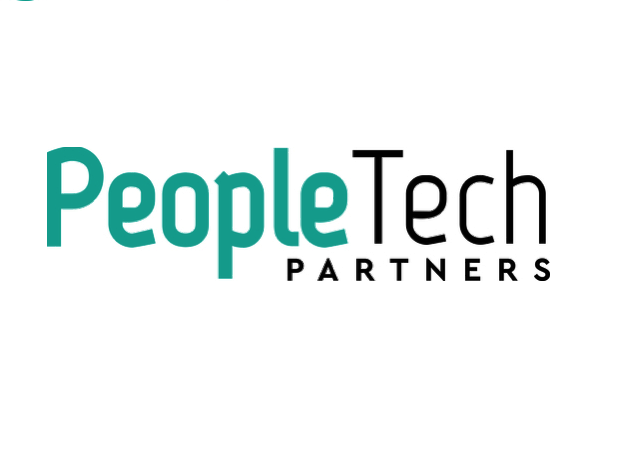
By Lauren Eager
As companies grow and the demand for talent gets ever greater, HR and People teams often become stretched thin to find and engage new candidates and land key employees within short timeframes, tight budgets and target niches. On top of the manpower required for recruiting at scale, diversity initiatives are rising to the top as key elements for ensuring an innovative and impactful workforce. With so many priorities for talent teams to manage, the challenges of hiring and building competitive workforces, especially within start-up or small company environments, are becoming business critical areas for companies to address.
It is not only critical for companies to leverage smart approaches to meet talent needs, those organizations aiming to win ongoing ‘talent wars’ within their competitive spaces are getting ahead with the support of emerging technologies. Many new solutions are now applying artificial intelligence (AI) for recruiting to amplify talent and People teams and identify, engage, and convert key candidates faster and more directly. While a number of new recruiting technologies, including AI enabled solutions, are hitting the market, a few advanced tools are rising to the top as powerful technologies for supporting existing People teams and the future of work.
One such technology, STELLARES, is an AI-powered talent acquisition platform that helps dozens of Bay Area tech companies identify and engage passive technical talent. As the People space becomes more dependent on technology overall, the efficient use of web-crawling and high-precision AI-matching in HR is changing the game in Talent and Acquisition. Additionally, as companies aim to maintain an engaged and effective workforce, ensuring that qualified job-seekers will be happy in the environments in which they work is critical for keeping employee retention high. STELLARES acts as a “virtual sourcer” to help candidates find a fit that matches their learning goals, work-life preferences, and passions, with users typically following 42% of job leads offered to them through the STELLARES platform, versus the average 5% of followed leads often experienced in the industry from other career sites.
To learn more about how this emerging technology is supporting and impacting the future of Recruiting for many companies, Lauren Eager of PeopleTech Partners sat down with Roi Chobadi, Co-Founder and CEO of STELLARES for a deep-dive discussion.
What gave you the idea to start STELLARES?
Before co-founding STELLARES I co-founded LiquidM, a machine learning powered programmatic advertising engine matching people to products. We grew the company to 50 employees leading up to its acquisition. As a founder — hiring was always top of mind, and I got more and more interested in the problem and the ways in which we could better solve it. I realized that I was uniquely positioned to really tackle this problem given my 15 years of experience as a deep-tech and machine learning engineer, and specifically having previously built a successful machine learning based matching company. At LiquidM we matched people to products and at STELLARES people to jobs. Moreover, leading the 8200 alumni association of the bay area, I’ve advised dozens of stellar talent about their career, giving me an additional unique insight as to what people want.
Who benefits from your solution?
Every company in the US in need of technical talent — for example software engineers, data scientists, and product managers — stands to benefit from our solution. Our platform automates passive talent sourcing, from reading job descriptions to autonomously booking introduction calls with elusive and passive candidates. We ensure that the candidates are both qualified, based on the customer criteria, and engaged, meaning genuinely interested in learning more about the opportunity and possibly interviewing. STELLARES automates talent sourcing and engagement, and does so while keeping the candidate experience hyper-personal, which leads to outstanding talent engagement metrics. Any technical or HR leader in the organization, from the Chief People Officer to the VP of Engineering, can benefit from STELLARES.
Why is this so important?
With STELLARES you can attract the talent that may be ignoring your sourcing campaigns. STELLARES’ “Storytelling Engine” finds just the right way to connect with each passive candidate individually and inspire them to engage. Our customers always recognize candidates whom they reached out to prior to using STELLARES and never heard back from, and are now interviewing with. Since the program automates sourcing, it frees up recruiters from the sourcing time-sink, allowing them to focus on connecting with candidates and converting them to placements.
The same recruiting team could place double the candidates in a given timeframe, as we give them 50% of their time back, along with additional booked calls with qualified engaged candidates. We slash costs not only in recruiting, but also in engineering. We save time by cutting down the number of engineers which hiring managers have to interview, since any poorly fitting candidate is filtered out early in the funnel.
We strongly believe that teams built with the proper fit, beyond just skills and experience, are stronger, more productive, and longer lasting. Proper fit means a team member has good chemistry with other team members and their boss, are fulfilling their learning goals, find purpose in their work, and feel that they have good career-life balance, amongst other things. We’re currently collecting the data points to publish or own findings regarding this once we reach a statistically significant length of time (this will be 2+ years).
What have you learned from your users and customers so far?
We’ve observed that the customers that convert the highest amount of placements tend to move fast and remain communicative throughout the interview process, from scheduling the first call to making an offer. A big frustration for candidates is lapses in communication, so moving them through your funnel quickly and giving them maximum attention is likely to give you a leg up over competitors.
What would you like to say to People leaders who are thinking of using your platform?
Getting started on STELLARES requires very minimal effort. Within an hour of setup and basic training, the platform is up and running and will be sourcing for all your jobs. We designed it to on-board new customers fast, and it is fully automated.
We’ve created a pilot period to allow you to give the platform a test run and see what it can do for you, which includes a dedicated customer success manager to help you make the most of your pilot. As part of the pilot package we also offer training workshops on how to hire passive talent.
Making this program work best for you requires a real partnership, and we’re looking for customers who are committed to weekly 15-minute check-ins and working together through any issues that may arise, especially during the pilot period. We want partners we can grow with, and who can help us take recruiting to new heights.
As a founder, what has been most challenging for you or your company?
Over time, we’ve learned to become not just a vendor, but also a consultant and guide to our customers. We help them do more than just use STELLARES, we also set up and fine tune their passive and top talent acquisition channels.
What has been the most fun or rewarding?
Getting “love letters” from talent or hiring managers who really found an amazing fit, and the impact this has had on their career, life, or organization.
What advice do you have for people leaders looking into leveraging AI for recruiting or sourcing?
First, make sure you understand what problem the platform is solving. In today’s market, the hardest problem in regards to sourcing tech talent, especially stellar or passive talent, is engagement. Tools that generate “lead lists” or tools that automate outreach are just a small piece of the puzzle. The real challenge becomes, “once I’ve identified N talent I really want for my role — how do I get as many of them as possible to engage with us?” Realizing that this is the core of the problem, we’ve invested a lot into our personalized storytelling engine, and now we manage to consistently deliver a talent engagement conversion rate of 35% across dozens of customers.
Second, be careful with how the skill-matching and star-detecting mechanisms of a platform work. If they’re based on your top performers and “cloning them” — there’s a high risk of bias (whether diversity related or other) creeping into your results. We’ve built STELLARES from the ground up to be free from diversity related biases.
What’s next for you and STELLARES?
STELLARES is just over 3 years old, and we’ve spent most of that time in stealth mode working with a few dozen customers, iterating on our tech and product, until we were able to achieve the impressive metrics that we’re able to show today. Earlier this year we decided that we were ready to come out of stealth, and our focus today is to engage with the Talent/HR community as much as possible, become part of it, contribute to it, learn about our customers’ needs and preferences, and serve the industry and its people the best way we can as we grow as members of this community.
–
Lauren Eager is on the Media team at PeopleTech Partners
–
Get first in line for more from the PeopleTech Partners community of top HR & People leaders on this and other key topics and trends impacting the future of work here.
–

